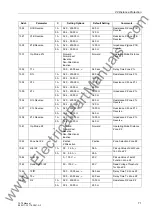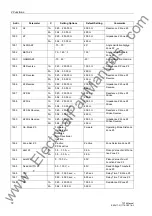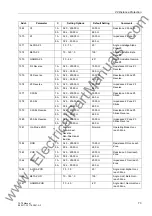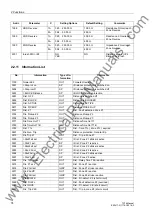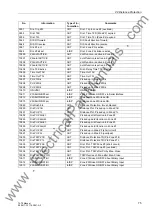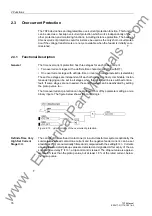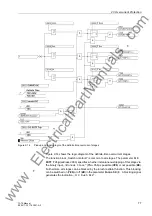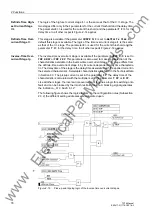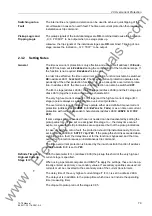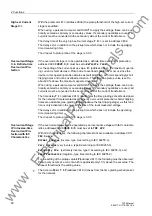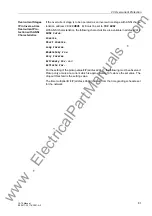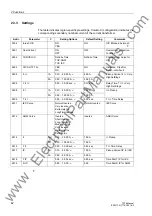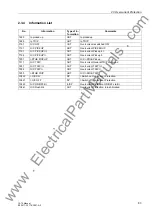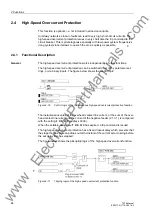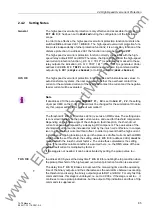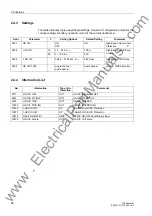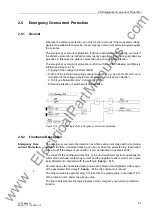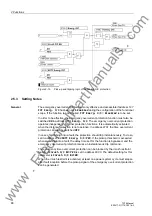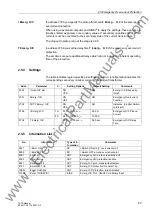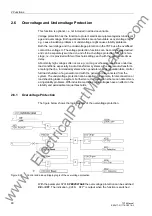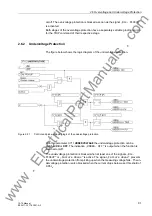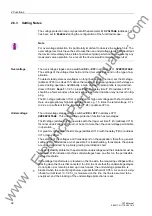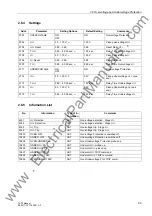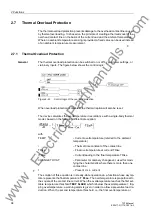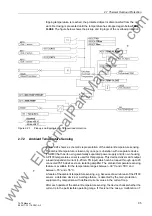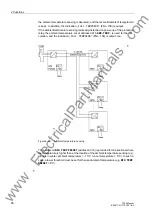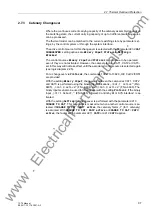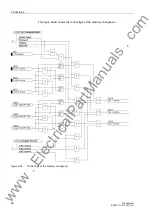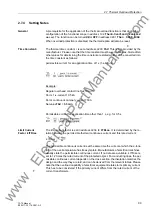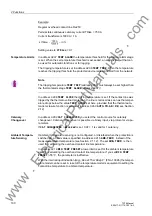
2.4 High-Speed Overcurrent Protection
85
7ST6 Manual
E50417-G1176-C251-A3
2.4.2
Setting Notes
General
The high-speed overcurrent protection is only effective and accessible if address
124
FCT HS O/C
has been set to
Enabled
during the configuration of the functional
scope.
In order to be effective, the high-speed overcurrent protection function must also be
switched
ON
in address
2401
=
HS O/C
. The high-speed overcurrent protection func-
tion works independently of other protection functions; it is an ancillary function of the
distance protection. In address
2401
the function can also be switched
OFF
.
The high-speed overcurrent protection function normally cooperates with the high-
speed relay outputs BO1 and BO2. Therefore, the trip command from the high-speed
overcurrent protection function (
„HS O/C TRIP“
) is permanently masked to these
relay outputs, the indication
„HS O/C TRIP (M)“
(FNo. 13815) is generated. Under
address
2408
HS O/C TRIP
it can be determined whether a trip command will be
output only to BO1 (
single-channel
) or to BO1 and BO2 (
dual-channel
).
I HS O/C
The high-speed overcurrent protection function works with instantaneous values. In
auto-transformer systems, the user can select whether the overhead contact line
current or the summated current of the overhead contact line current and the negative
feeder current will be evaluated.
Note
If at address
213
the parameter
CURRENT I1, I2
is set to
Sum I1, I2
, the setting
of jumper X600 on the C-I/O 13 board must be changed for the summation! On deliv-
ery, this jumper setting is for „without summation“!
The threshold
I HS O/C
(address
2404
) is set as an RMS value. The setting value
is converted internally to the peak current value, and used for threshold comparison.
Depending on the phase angle of the voltage on fault inception, the short-circuit
current can be superimposed by a decaying DC component. The peak value of the
short-circuit current can be increased at most by the inrush current factor
κ
in compar-
ison to a short-circuit current without offset. In order to prevent that the high-current
instantaneous tripping function picks up in the presence of offset currents with an RMS
value below the set threshold, the setting value
I HS O/C
(address
2404
)
must
be
multiplied with the inrush current factor
κ
. The value thus calculated is the setting
value. The least favourable condition is assumed here, i.e. the RMS value of the ex-
pected fault current is multiplied by factor 2.
If the stage is not needed, it can be deactivated by setting the pickup value to
∞
.
T HS O/C
In address
2405
you set the delay time
T HS O/C
for enabling the trip condition when
the pickup threshold of the high-speed overcurrent protection function is exceeded.
The delay time
T HS O/C
takes into account the measuring time and the operating
time of the binary outputs, and thus characterises the actual time between exceeding
the threshold and issuing the binary output signal to BO1 and BO2. For very fast trip
command times, this stage is undelayed, i.e. set to 0.000 s. If the stage is set to
∞
, it
continues to issue pickup indications, but the output of trip indications and thus of trip
commands is suppressed.
www
. ElectricalPartManuals
. com

